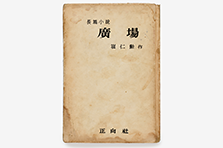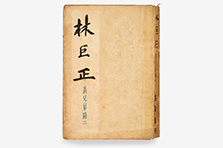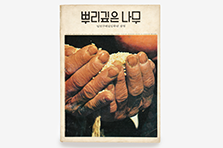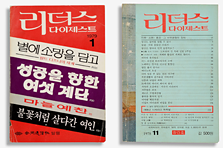Exhibitions
The Globalization of Hangeul
Home > Exhibitions > Permanent Exhibition > The Globalization of Hangeul
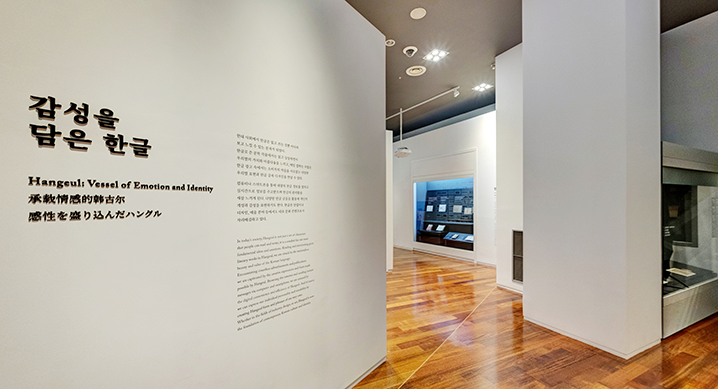
In today’s society, Hangeul is not just a set of characters that people can read and write; it is a
conduit for our most fundamental ideas and emotions. Reading and envisioning great literary works
in Hangeul, we are struck by the tremendous beauty and value of the Korean language.
Encountering countless advertisements and publications, we are captivated by the creative expressions
and fonts made possible by Hangeul. Scanning the internet and sending instant messages via
computer and smartphone, we are amazed by the digital convenience and efficiency of Hangeul.
And of course, we can express our individual personality and sensibility by creating Hangeul fonts
and phrases of our very own. Whether in the fields of industry, design, or art, Hangeul is now the
foundation of contemporary Korean culture and identity.
1) Hangeul and Literature
For centuries, many Koreans wrote with Chinese characters, and then Japan tried to impose its
language on Korea during the Japanese colonial era (1910-1945). Thus, although Hangeul was
created in the fifteenth century, it has only recently come into widespread use as the exclusive
means for transcribing the Korean language. Since that time, the expressiveness of the Korean
language has considerably increased, as has the quality of Korean literature, which has taken on
unique new styles and tones.
Using everyday language as a raw material, Korean writers are continuously revising word
arrangement and sentence structure, applying innovative conjugations and postpositions to convey
meaning. Of course, writers also love to experiment with words that are not in the common
parlance, transcribing unconventional words into Hangeul to create their own lexicon. Through
literature in Hangeul, we can experience the subtlety and diversity of the Korean language.
2) Hangeul and Advertisements
Since the first Hangeul advertisement appeared on April 7, 1896 The Independent, Hangeul advertisements have become almost ubiquitous in contemporary media. Today’s advertisements creatively appropriate the specialized characteristics of Hangeul to stimulate people’s sense of vision, hearing, and taste. Applying the latest trends and fashions, advertisements use an array of ingenious expressive methods to induce people to purchase products and services. As various branches of media have developed, the visual beauty and uniqueness of Hangeul have been increasingly highlighted to accentuate the brand and features of given products, with the ultimate goal of captivating the imagination of the consumer.
"Hangeul lettering in advertisements classified by the times" at a glance
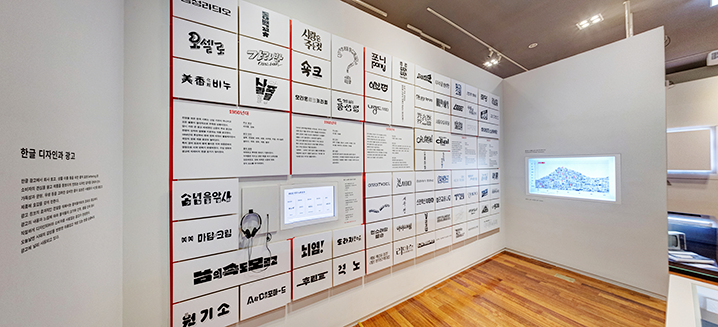
▲ Hangeul lettering used in advertising products and movies from 1950s to 2000s
3) Hangeul Informatization
Hangeul has proven to be ideally suited for the digital age. Every day, people use Hangeul word
processors, keyboards, and fonts to send messages and share their ideas. In addition, there are now computer codes in Hangeul, while Corpus has greatly enhanced the collection, categorization, and
analysis of research in Hangeul. Finally, voice recognition software and automated translation
programs for Hangeul are helping Koreans communicate with the world, and vice versa.
Indeed, the rapid digitization of Hangeul has played a key role in Korea’s emergence as one of the
world’s most digitally advanced nations. This has been a remarkable accomplishment, especially
given that computers were invented and designed for Western alphabets. The convenient digitization
of Hangeul that we now enjoy is the direct result of continuous efforts to upgrade Hangeul for use
in the computer environment.
Hangeul Digitization at a Glance
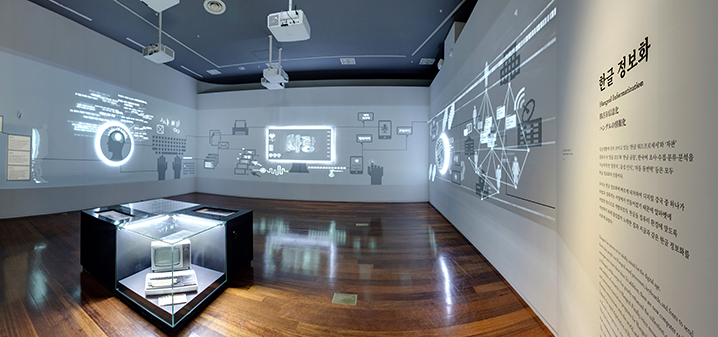
▲ Informatization experience contents utilizing latest techniques such as video mapping and more
Hangeul blooms
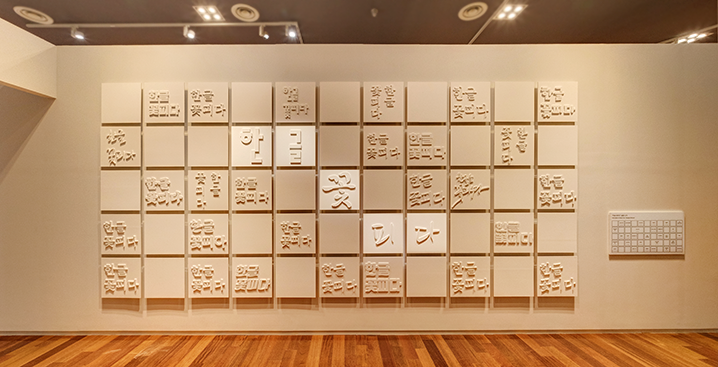
▲ Epilogue area

















